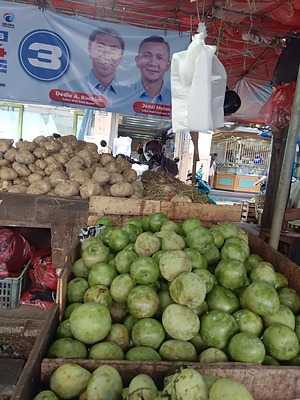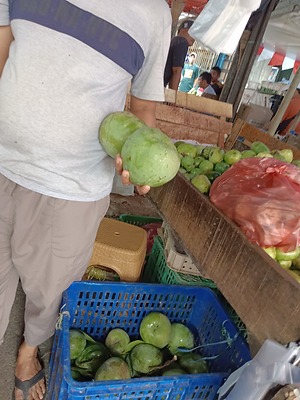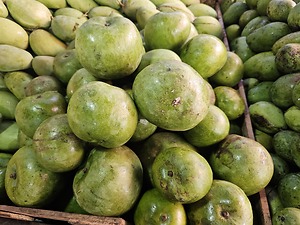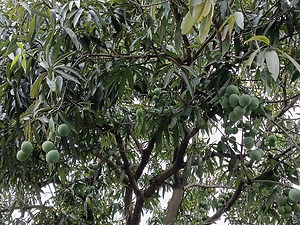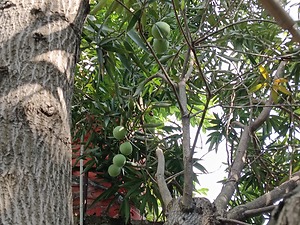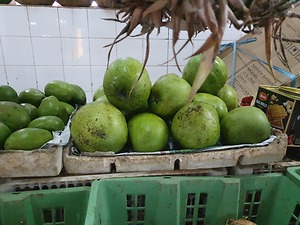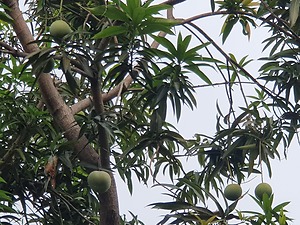

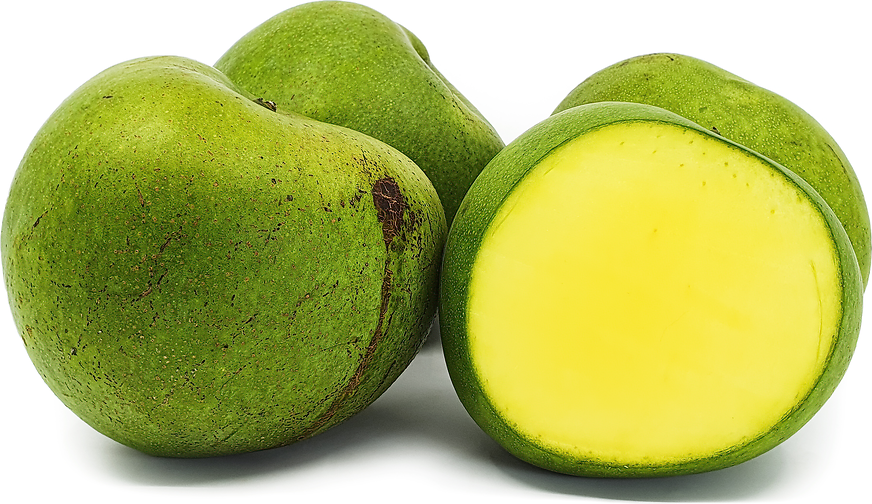
Mangga Apel
Estimated Inventory, lb : 0
Description/Taste
Mangga Apels are medium to large in size and have a globose to ovate shape with a small depression surrounding the slender, dark brown stem. The thin skin has a light, waxy feel and is bright green when young with small brown-black and light green spots speckled across the surface. As the fruit matures, the waxy layer reduces, and the skin may develop darker spots with hues of red and yellow. Underneath the skin, the firm flesh is crisp, fine-grained, and yellow-green with a fibrous center. Mangga Apels are crunchy and have a sour taste when under-ripe, developing a softer flesh and sweet-tart taste when ripe.
Seasons/Availability
Mangga Apels are available year-round in tropical regions across Southeast Asia.
Current Facts
Mangga Apels, botanically classified as Mangifera indica, are round fruits that grow on trees reaching four meters in height and belong to the Anacardiaceae family. Also known as the Apple mango, Mangga Apels are an early ripening variety that gets its name from its round shape and similarity in appearance to an apple. There are two varieties of Mangga Apels, red and green, and these mangoes are favored in Southeast Asia for their sweet-tart flavor.
Nutritional Value
Mangga Apels contain antioxidants such as vitamin C, and also contain beta-carotene, fiber, and potassium.
Applications
When young, Mangga Apels are very firm and crisp, providing a crunchy, sour bite to fresh salads, salsas, and chutneys. They can also be sliced into thin strips and used as a dipping vessel in sauces and dressings or pickled for extended use. As the fruits mature and soften, they can be consumed on their own and if the flesh is still too sour salt can be added to balance the flavor. Mangga Apels can also be mixed into curries and stir-fries, cooked into jam, or served in sauces with fish, poultry, or pork. The fruits will keep up to a week when stored at room temperature and once ripe, they can be stored for a few additional days in the refrigerator.
Ethnic/Cultural Info
In Southeast Asia, Mangga Apels are favored for use in rojak or rujak, which is a traditional salad dish made from local vegetables and fruits often coated in a sweet, spicy sauce. Depending on the region, each rojak is made slightly different depending on produce availability and local customs. In Singapore before the 1980s, rojak was often created using Mangga Apels and was popularly sold by local pushcart vendors and rojak peddlers. These peddlers would travel down neighborhood streets on bicycles, freshly chopping the salad in front of their customer and serving the dish in a leaf with toothpicks. Today in Singapore, the mixed dish has been influenced by flavors from India and China and is often made into a main dish combining Mangga Apels with potatoes, tofu, fritters, shrimp, or fish.
Geography/History
Mangga Apels are believed by some experts to be native to Singapore, but the exact origins are mostly unknown. Today the round fruits are grown across subtropical and tropical regions in Southeast Asia and can be found at local markets in Malaysia, Indonesia, the Philippines, and Thailand.







